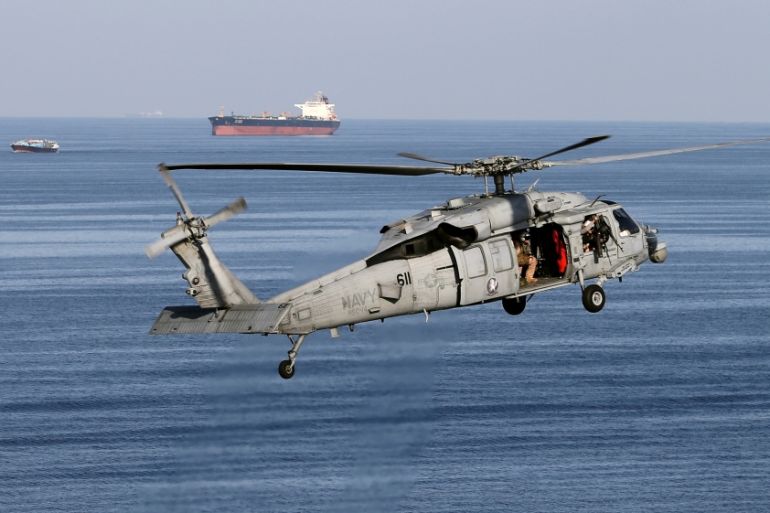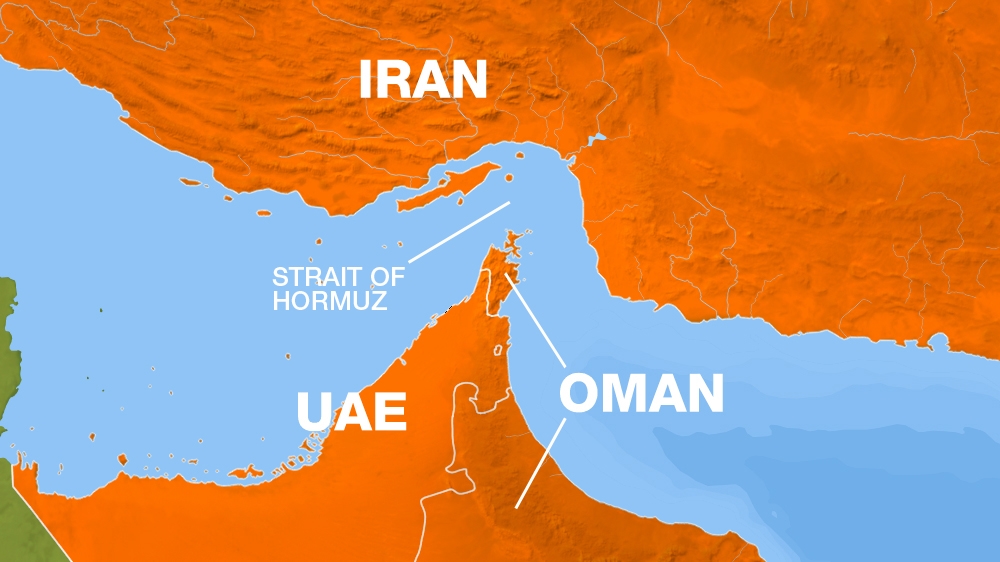Why is the Strait of Hormuz so strategically important?
Explaining the economic and geopolitical significance of the key waterway out of the Gulf.

The Strait of Hormuz is the world’s single most important oil passageway, forming a chokepoint between the Arabian Gulf and the Gulf of Oman. The 39km strait is the only route to the open ocean for over one-sixth of global oil production and one-third of the world’s liquified natural gas (LNG).
The maritime area has been in the news following explosions on June 13 that damaged two oil tankers just a month after four other vessels were sabotaged nearby.
Keep reading
list of 4 itemsChina’s Xi Jinping begins first Europe tour in five years in France
A good, steady job? India election turns spotlight on a dream gone sour
Photos: Iran’s unravelling carpet sales
On Thursday, the United Kingdom said three Iranian vessels unsuccessfully tried to impede the passage of a British commercial vessel through the strait.
Where exactly is the Strait of Hormuz?
It lies between Oman and Iran, linking the sea passage from the countries on the Gulf (Iraq, Kuwait, Saudi Arabia, Bahrain, Qatar and the United Arab Emirates) with the Arabian Sea and beyond.
How wide is it?
Although the narrowest point in the strait is just 33km wide, the shipping lanes in both directions are only 3km wide.
Is it really the only way out of the Gulf?
Traveling by sea, the strait is the only means of transporting goods or people to the rest of the world. For this reason, the UAE and Saudi Arabia have proposed building more oil pipelines to avoid the problematic waterway.
How much oil and gas passes through?
Around one-sixth of the world’s oil moves through the strait – 17.2 million barrels per day. This includes most of the oil from Organization of Petroleum Exporting Countries (OPEC) members Saudi Arabia, Iran, the UAE and Kuwait. Qatar, the world’s biggest exporter of LNG, sends most of its LNG through the strait as well.
What naval force protects the region?
The United States Fifth Fleet, based in Manama, Bahrain, is responsible for protecting maritime shipping lanes.
Is there a history of vessels being attacked?
During the Iran-Iraq War in the 1980s, the two countries routinely menaced each other’s oil shipments. In 1988, US warship Vincennes shot down an Iranian passenger plane, killing 290 people in what Washington said was an accident. In 2010, a Japanese oil tanker was attacked by a group linked to al-Qaeda.
How did the situation heat up in the last decade?
In early 2012, Iran threatened to interfere with ships traveling through the strait in retaliation for US and European sanctions targeting its oil sales. The Western effort was part of a concerted programme to halt Tehran from developing nuclear weapons.
What was Iran’s response?
In response to US sanctions on Iran attempting to stop Tehran’s oil exports and strangle its economy, the Iranian government has threatened to cause problems for oil tankers in the Strait of Hormuz.
What happened more recently?
In May 2019, four vessels – including two Saudi oil tankers – were attacked near Fujairah just beyond the strait. While the June 13 attacks on two oil tankers in the Gulf of Oman raised fears about the global oil supply and new questions about the security of shipments through the Strait of Hormuz.
What is the latest?
On July 11, the UK said that three Iranian vessels had unsuccessfully tried to impede the passage of a British commercial ship, a claim Iran rejects. A week earlier, the UK seized an Iranian oil tanker suspected of transporting crude oil to Syria in contravention of European Unionsanctions off the coast of Gibraltar.
